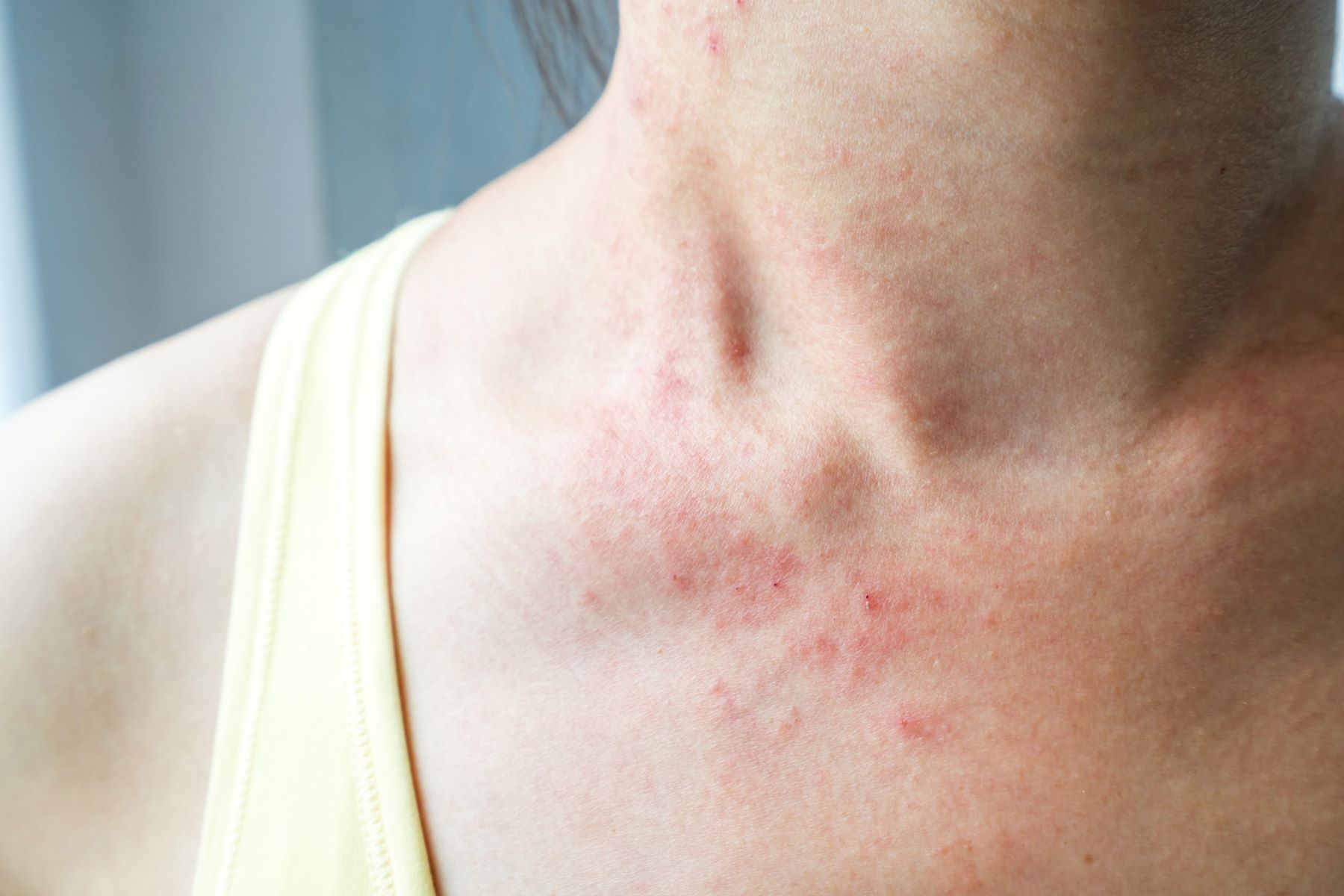
Sweet's Syndrome, also known as acute febrile neutrophilic dermatosis, is a rare skin condition characterized by sudden onset of fever, painful skin lesions, and an elevated white blood cell count. What causes Sweet's Syndrome? The exact cause remains unknown, but it is often associated with infections, certain medications, or underlying health conditions like cancer or inflammatory diseases. How is it diagnosed? Diagnosis typically involves a combination of clinical evaluation, blood tests, and skin biopsies. Can it be treated? Yes, treatment usually includes corticosteroids to reduce inflammation and manage symptoms. Understanding this condition can help in recognizing its signs early and seeking appropriate medical care.
Key Takeaways:
- Sweet's Syndrome is a rare skin condition with fever and painful lesions. It can be triggered by infections, medications, or inflammatory diseases. Early diagnosis and treatment are crucial for managing the condition effectively.
- Patients with Sweet's Syndrome should work closely with healthcare providers, avoid triggers, and manage stress. Support from family, friends, and support groups can make a significant difference. Ongoing research offers hope for improved treatments.
What is Sweet's Syndrome?
Sweet's Syndrome, also known as acute febrile neutrophilic dermatosis, is a rare skin condition characterized by fever and painful skin lesions. It was first described by Dr. Robert Douglas Sweet in 1964. This condition can be associated with infections, inflammatory diseases, or cancer.
- Sweet's Syndrome is named after Dr. Robert Douglas Sweet, who first described it in 1964.
- The condition is also known as acute febrile neutrophilic dermatosis.
- It is characterized by the sudden onset of fever and painful skin lesions.
- The lesions are typically red or purple and can appear anywhere on the body.
- Sweet's Syndrome is more common in women than men.
Causes and Triggers
Understanding what triggers Sweet's Syndrome can help in managing the condition. While the exact cause is unknown, several factors can contribute to its development.
- The exact cause of Sweet's Syndrome is unknown.
- It can be triggered by infections, such as upper respiratory infections.
- Certain medications, like antibiotics and granulocyte colony-stimulating factors, can trigger the condition.
- Sweet's Syndrome can be associated with inflammatory diseases like Crohn's disease or rheumatoid arthritis.
- It is sometimes linked to cancers, particularly blood cancers like leukemia.
Symptoms and Diagnosis
Recognizing the symptoms is crucial for early diagnosis and treatment. Sweet's Syndrome presents with a variety of symptoms that can sometimes be mistaken for other conditions.
- Common symptoms include fever, malaise, and painful skin lesions.
- The lesions are often tender and can be red or purple in color.
- Lesions typically appear on the face, neck, upper body, and arms.
- Some patients may experience joint pain and headaches.
- Diagnosis is usually made based on clinical presentation and skin biopsy.
Treatment Options
Once diagnosed, Sweet's Syndrome can be managed with various treatments. The goal is to reduce inflammation and alleviate symptoms.
- Corticosteroids are the most common treatment for Sweet's Syndrome.
- Oral prednisone is often prescribed to reduce inflammation.
- Topical steroids can be used for localized lesions.
- Nonsteroidal anti-inflammatory drugs (NSAIDs) may help with pain and inflammation.
- In severe cases, immunosuppressive drugs like cyclosporine may be used.
Complications and Prognosis
While Sweet's Syndrome can be managed, it is important to be aware of potential complications and the overall prognosis.
- If left untreated, Sweet's Syndrome can lead to complications like secondary infections.
- The condition can recur, especially if the underlying trigger is not addressed.
- Chronic cases may require long-term treatment and monitoring.
- The prognosis is generally good with appropriate treatment.
- Early diagnosis and treatment can significantly improve outcomes.
Sweet's Syndrome and Cancer
The relationship between Sweet's Syndrome and cancer is complex. Understanding this connection is important for both patients and healthcare providers.
- Sweet's Syndrome can be a paraneoplastic syndrome, meaning it is associated with cancer.
- Blood cancers like leukemia are most commonly linked to Sweet's Syndrome.
- Solid tumors, such as breast or colon cancer, can also be associated with the condition.
- In some cases, Sweet's Syndrome may be the first sign of an underlying malignancy.
- Regular cancer screenings are recommended for patients with Sweet's Syndrome.
Living with Sweet's Syndrome
Managing daily life with Sweet's Syndrome involves more than just medical treatment. Lifestyle changes and support can make a significant difference.
- Patients are advised to avoid known triggers, such as certain medications.
- Stress management techniques can help reduce flare-ups.
- A balanced diet and regular exercise can improve overall health.
- Support groups and counseling can provide emotional support.
- Regular follow-ups with a healthcare provider are essential for monitoring the condition.
Research and Future Directions
Ongoing research is crucial for better understanding and treating Sweet's Syndrome. Advances in medical science offer hope for improved management of the condition.
- Researchers are investigating the genetic factors that may contribute to Sweet's Syndrome.
- New treatments, including biologics, are being studied for their effectiveness.
- Clinical trials are exploring the use of targeted therapies for Sweet's Syndrome.
- Advances in diagnostic techniques are helping to identify the condition earlier.
- Increased awareness and education about Sweet's Syndrome are improving patient outcomes.
Interesting Facts
Sweet's Syndrome has some unique and lesser-known aspects that make it an intriguing condition to study.
- The condition is named after a British dermatologist, Dr. Robert Douglas Sweet.
- It was first described in a paper published in 1964.
- Sweet's Syndrome can affect people of all ages, but it is most common in middle-aged adults.
- The condition is rare, with an estimated incidence of 3 cases per million people per year.
- Sweet's Syndrome can sometimes be mistaken for infections or other inflammatory conditions.
Conclusion
Sweet's Syndrome is a rare but manageable condition. With proper diagnosis and treatment, most patients can lead healthy lives. Ongoing research and increased awareness will continue to improve outcomes for those affected by this condition.
- Early diagnosis and treatment are key to managing Sweet's Syndrome effectively.
- Patients should work closely with their healthcare providers to develop a personalized treatment plan.
- Avoiding known triggers and managing stress can help prevent flare-ups.
- Support from family, friends, and support groups can make a significant difference in the lives of patients.
- Ongoing research and advancements in medical science offer hope for improved treatments and outcomes for those with Sweet's Syndrome.
Key Points to Remember
Sweet's Syndrome, also known as acute febrile neutrophilic dermatosis, is a rare skin condition characterized by painful red or purple lesions. It often appears suddenly and can be triggered by infections, certain medications, or underlying health conditions like cancer. Early diagnosis and treatment are crucial to manage symptoms and prevent complications.
Corticosteroids are the primary treatment, helping to reduce inflammation and speed up recovery. Other treatments might include immunosuppressants or colchicine. It's essential to work closely with a healthcare provider to tailor the treatment plan to individual needs.
Living with Sweet's Syndrome can be challenging, but understanding the condition and its triggers can help manage it effectively. Stay informed, seek medical advice promptly, and maintain a supportive network to navigate this rare condition. Knowledge and proactive care make a significant difference.
Frequently Asked Questions
Was this page helpful?
Our commitment to delivering trustworthy and engaging content is at the heart of what we do. Each fact on our site is contributed by real users like you, bringing a wealth of diverse insights and information. To ensure the highest standards of accuracy and reliability, our dedicated editors meticulously review each submission. This process guarantees that the facts we share are not only fascinating but also credible. Trust in our commitment to quality and authenticity as you explore and learn with us.


